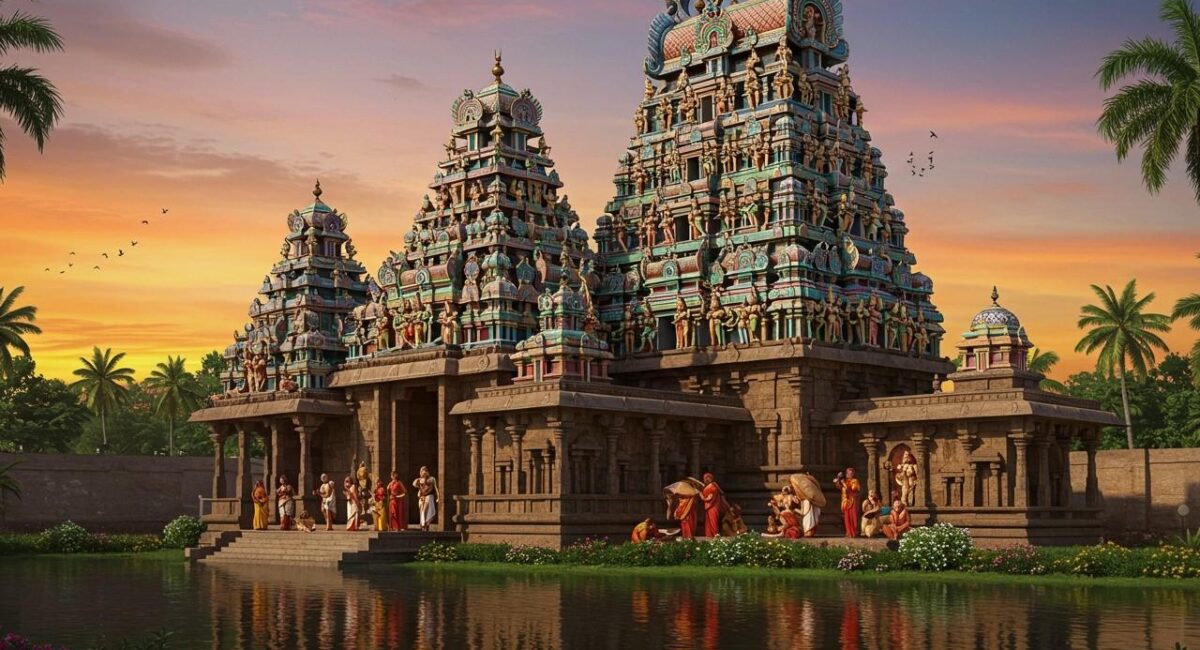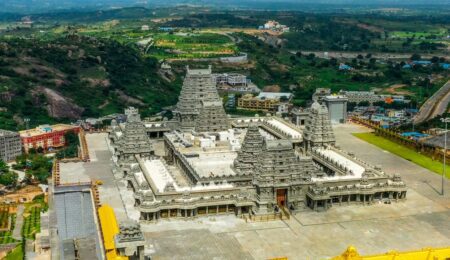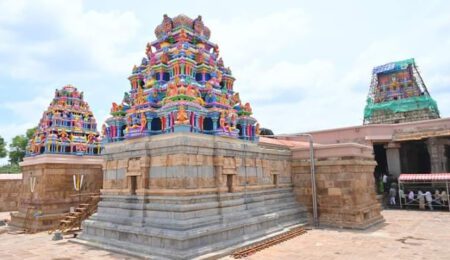Temple and Architecture: Understanding the Legacy of Temple Architecture
Introduction
Temples are more than places of worship; they are living symbols of human creativity, spiritual philosophy, and cultural identity. The relationship between temple and architecture has always been profound. A temple is not just a building it is a cosmic diagram, a spiritual machine, and a cultural repository.
From the massive stone temples of India to the wooden pagodas of East Asia, temple architecture reflects the ways societies have sought to connect with the divine. Among all civilizations, Hindu temple architecture stands out as one of the most intricate and symbolic traditions, blending geometry, mythology, and artistry into structures that have endured for centuries.
In this blog, we will explore the meaning, history, principles, styles, symbolism, and significance of temple and architecture, with a special focus on Hindu temple architecture.
The Relationship Between Temple and Architecture
The concept of a temple cannot be separated from architecture. While faith gives a temple its purpose, architecture gives it form and permanence. The design of a temple is not accidental it follows sacred rules and principles that embody cosmic order.
- Spiritual Connection: Temples act as a bridge between man and the divine.
- Symbolism: Every element of a temple represents aspects of the universe.
- Art and Culture: Temples preserve traditions, art forms, sculpture, and rituals.
- Science and Engineering: From astronomy to acoustics, temples showcase advanced knowledge.
Thus, when we speak of temple and architecture, we speak of an inseparable union of faith, design, and symbolism.
Origins of Temple Architecture
The earliest temples were simple natural spaces trees, rivers, caves considered sacred. With the evolution of organized religion, permanent temples were constructed.
- Vedic Period: Worship centered on open-air altars (yajna vedis).
- Gupta Period (4th–6th century CE): First stone temples were built, marking the beginning of Hindu temple architecture.
- Medieval Era (7th–12th century CE): Magnificent temples like Brihadeeswarar, Khajuraho, and Konark Sun Temple were constructed.
- Global Evolution: In other cultures, Greek temples (Parthenon), Egyptian temples (Luxor), and Buddhist temples (Borobudur) also emerged as symbols of divine connection.
Fundamental Principles of Temple Architecture
Hindu temple architecture follows guidelines from Vastu Shastra (science of spatial design) and Shilpa Shastra (art of sculpture and craftsmanship).
1. Cosmic Representation
- Temples represent the universe in miniature form.
- The floor plan is based on the Vastu Purusha Mandala, a geometric diagram symbolizing cosmic order.
2. Key Components of a Temple
- Garbhagriha (Sanctum Sanctorum): Womb chamber where the deity resides.
- Shikhara or Vimana: Tower rising above the sanctum, symbolizing ascent to heaven.
- Mandapa: Pillared hall for devotees.
- Pradakshina Patha: Circumambulatory path around the sanctum.
- Gopuram: Monumental gateway (especially in South India).
3. Orientation
- Temples are aligned to cardinal directions, with the deity often facing east.
- Many temples are aligned with celestial events like solstices and equinoxes.
Major Styles of Hindu Temple Architecture
1. Nagara Style (North India)
- Features curvilinear shikhara.
- Square base, vertical growth.
- Walls decorated with sculptures.
- Examples: Kandariya Mahadeva Temple (Khajuraho), Sun Temple (Konark).
2. Dravida Style (South India)
- Defined by pyramidal vimana.
- High walls and monumental gopurams.
- Examples: Brihadeeswarar Temple (Thanjavur), Meenakshi Amman Temple (Madurai).
3. Vesara Style (Deccan)
- Fusion of Nagara and Dravida.
- Star-shaped plans, ornate carvings.
- Examples: Chennakesava Temple (Belur), Hoysaleswara Temple (Halebidu).
Symbolism in Temple Architecture
The relationship between temple and architecture is most evident in symbolism:
- Shikhara/Vimana: Represents Mount Meru, cosmic axis.
- Kalasha: Union of heaven and earth.
- Lotus motifs: Purity and divine energy.
- Circumambulation: Eternal cycle of existence.
- Mandapa: Material world, preparing devotees for spiritual union.
Engineering and Artistic Brilliance
Hindu temples also showcase scientific and artistic mastery:
- Stone Carving: Intricate sculptures depicting gods, animals, dancers.
- Astronomical Precision: Sun Temple at Konark aligns with solar movement.
- Acoustics: Temples designed to enhance sound during rituals.
- Structural Stability: Massive temples built without modern cementing materials.
Regional Variations of Temple and Architecture in India
- Western India: Dilwara Temples (Mount Abu, Rajasthan) – marble carvings.
- Eastern India: Temples of Odisha (Lingaraja Temple, Bhubaneswar).
- Southern India: Chola temples with massive vimanas.
- Himalayan Region: Wooden and stone temples adapted to climate.
- Kerala: Sloping roofs, wood carvings, simple vimanas.
Global Perspectives on Temple Architecture
Beyond India, temples have different architectural expressions:
- Greek Temples: Parthenon (Athens).
- Egyptian Temples: Karnak, Luxor.
- Buddhist Temples: Borobudur (Indonesia).
- Japanese Shinto Shrines: Simplicity and natural harmony.
This shows that temple and architecture is a global phenomenon, adapted to different cultures and climates.
Decline and Preservation
Many temples were destroyed during invasions, while others fell into neglect. Today, global awareness has led to restoration and preservation efforts by UNESCO and ASI. Modern architects also draw inspiration from traditional temple architecture for designing spiritual and cultural centers worldwide.
Modern Relevance of Temple and Architecture
Even in the 21st century, temples remain vital:
- Cultural Hubs: Hosting festivals, rituals, and educational activities.
- Tourist Attractions: Drawing millions of visitors.
- Architectural Inspiration: Modern temples blend tradition with contemporary design.
- Spiritual Centers: Continuing to serve as places of meditation and worship.
FAQs
1. What is temple architecture?
Temple architecture refers to the design, structure, and symbolism of temples, blending art, science, and spirituality.
2. What is the relationship between temple and architecture?
Temple and architecture are inseparable—the design of a temple embodies cosmic principles, spiritual beliefs, and cultural values.
3. What are the main styles of Hindu temple architecture?
The three main styles are Nagara (North India), Dravida (South India), and Vesara (Deccan).
4. Why are Hindu temples aligned to the east?
East-facing alignment allows the deity to greet the rising sun, symbolizing new beginnings and divine light.
5. How are temples preserved today?
UNESCO, ASI, and local organizations work on conservation projects to protect temple architecture for future generations.
Conclusion
The study of temple and architecture reveals a timeless tradition that goes beyond religion—it embodies philosophy, science, art, and community. Temple architecture is not just about stone and structure; it is about cosmic order, divine symbolism, and human aspiration toward the sacred.
From the simple shrines of the Vedic age to the grand temples of Khajuraho, Madurai, and Konark, temples remain living monuments of devotion and creativity. They are a reminder that faith and architecture, when combined, can produce wonders that last for millennia.




Leave a Comment